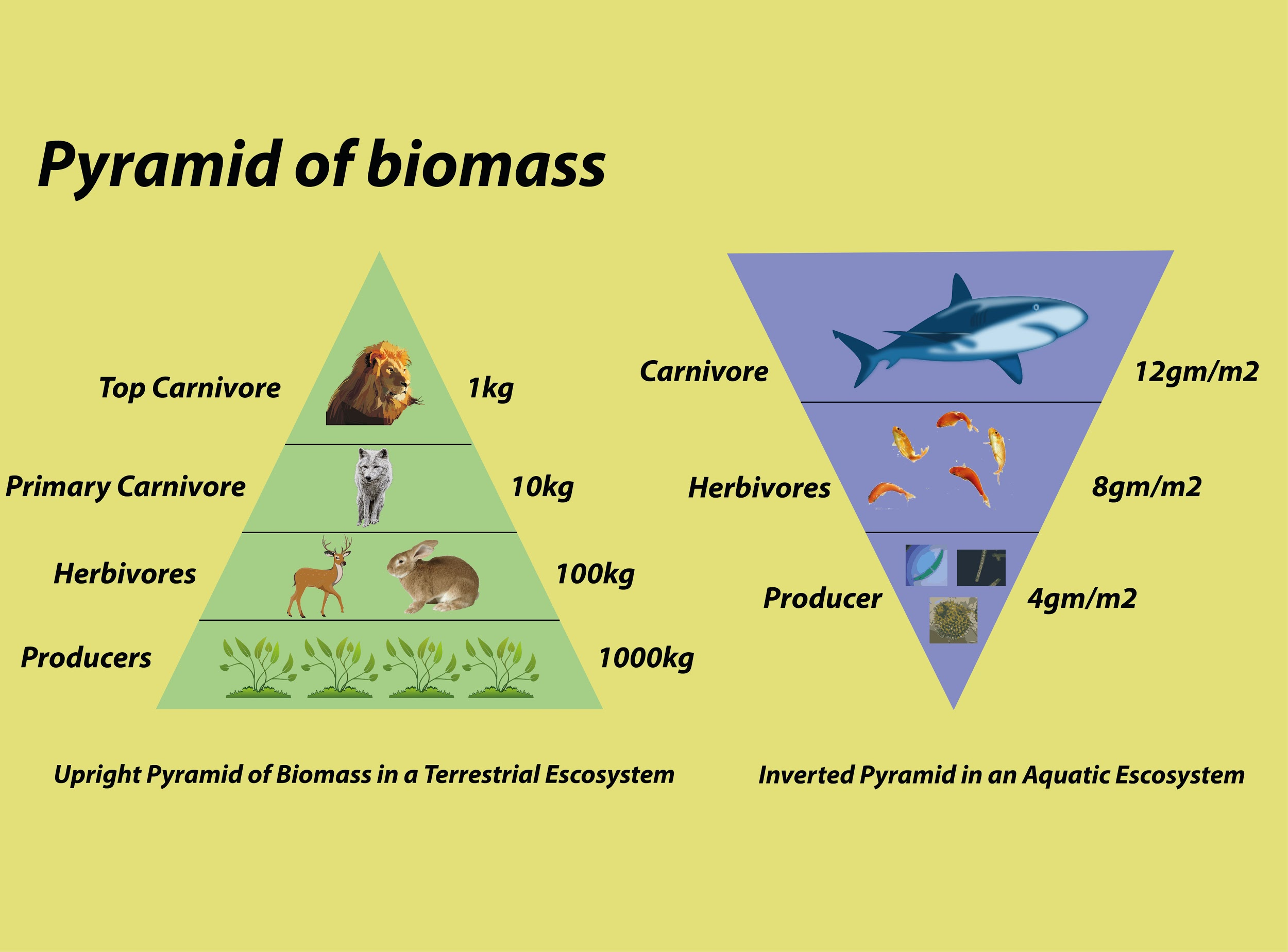
Why are the pyramids referred to as ‘upright’ or ‘inverted’. Explain.
Answer
481.8k+ views
Hint: Pyramids represent the number of individuals in the various trophic levels and the amount of biomass or energy transfer at the different trophic levels.
Complete answer:
Pyramid of energy or biomass is upright and other pyramids can be inverted or take other shapes. When the number of individuals takes into consideration i.e. at the top the number of individual consumers increases and decreases at the bottom thus the pyramid obtained is inverted. When the amount of energy and biomass various in each level always creates an upright pyramid.

Additional Information:
-The pyramid-shaped representation designed to depict the relationship with quantitatively the number of organisms as consumers, or the energy and biomass production and utilization by the ecosystem.
-The idea of the ecological pyramid was given by G. Evelyn Hutchinson and Raymond Lindeman.
In most of the ecological pyramid, the producer forms the base, and the successive trophic levels make up the apex.
-Mainly the ecological pyramid is of three types: the pyramid of the number, pyramid of biomass, and the pyramid of energy.
-Pyramid of energy is always upright as the energy flow in food is always unidirectional.
-Ecological pyramids show a different level of ecosystem feeding on a different level of the ecosystem.
Note:
-The ecological pyramid doesn’t show the relationship of the different ecosystem levels with the climates and seasons.
-In the ecological pyramid of energy, 10% law is followed in which only 10% of energy from the organic matter is passed on the upper level of the ecosystem. The 10% law is given by Raymond Lineman.
Complete answer:
Pyramid of energy or biomass is upright and other pyramids can be inverted or take other shapes. When the number of individuals takes into consideration i.e. at the top the number of individual consumers increases and decreases at the bottom thus the pyramid obtained is inverted. When the amount of energy and biomass various in each level always creates an upright pyramid.

Additional Information:
-The pyramid-shaped representation designed to depict the relationship with quantitatively the number of organisms as consumers, or the energy and biomass production and utilization by the ecosystem.
-The idea of the ecological pyramid was given by G. Evelyn Hutchinson and Raymond Lindeman.
In most of the ecological pyramid, the producer forms the base, and the successive trophic levels make up the apex.
-Mainly the ecological pyramid is of three types: the pyramid of the number, pyramid of biomass, and the pyramid of energy.
-Pyramid of energy is always upright as the energy flow in food is always unidirectional.
-Ecological pyramids show a different level of ecosystem feeding on a different level of the ecosystem.
Note:
-The ecological pyramid doesn’t show the relationship of the different ecosystem levels with the climates and seasons.
-In the ecological pyramid of energy, 10% law is followed in which only 10% of energy from the organic matter is passed on the upper level of the ecosystem. The 10% law is given by Raymond Lineman.
Recently Updated Pages
Can anyone list 10 advantages and disadvantages of friction

What are the Components of Financial System?

Questions & Answers - Ask your doubts

Master Class 11 Accountancy: Engaging Questions & Answers for Success

Master Class 11 Science: Engaging Questions & Answers for Success

Full Form of IASDMIPSIFSIRSPOLICE class 7 social science CBSE

Trending doubts
10 examples of friction in our daily life

The correct order of melting point of 14th group elements class 11 chemistry CBSE

Difference Between Prokaryotic Cells and Eukaryotic Cells

One Metric ton is equal to kg A 10000 B 1000 C 100 class 11 physics CBSE

What is the specific heat capacity of ice water and class 11 physics CBSE

State and prove Bernoullis theorem class 11 physics CBSE




